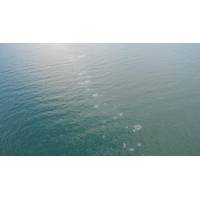
Coast Guard Monitoring Oil Discharge from Scuttled Liberty Ship
The U.S. Coast Guard and Florida’s Department of Environmental Protection (DEP) are monitoring periodic discharges of oil from the Liberty Ship Thomas Heyward, a World War II era vessel sunk in 1977 to serve as an artificial reef approximately six miles southwest of Destin, Fla.Following Hurricane Sally in September 2020, the National Response Center (NRC) began receiving reports of pollution in the vicinity of the artificial reef. Coast Guard personnel conducted preliminary investigations; contacting other government agencies to include Florida’s DEP, Florida Fish and Wildlife Conversation
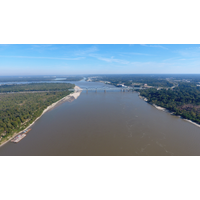
NOAA Forecasts Average Summer 'Dead Zone' in the Gulf of Mexico
how hypoxia in the Gulf of Mexico is linked to nutrients coming from throughout the Mississippi River Basin. The Task Force uses the information the two agencies produce to inform nutrient reduction targets across the Mississippi watershed states.Through the Bipartisan Infrastructure Law, the U.S. Environmental Protection Agency (EPA) is investing $60 million over the next five years to support the implementation of nutrient reduction strategies that will address the challenge of Gulf hypoxia.“The Hypoxia Task Force has a transformational opportunity to further control nutrient loads in the Mississippi

EPA to Lift Sunken Vessel Leaking Oil in Lake Tahoe
The U.S. Environmental Protection Agency (EPA) will raise a vessel first reported sunk in Lake Tahoe on January 15. EPA, in coordination with the El Dorado County Sheriff, the Lahontan Regional Water Quality Control Board, the Tahoe Regional Planning Agency and the California Department of Fish and Wildlife Office of Spill Prevention and Response is taking action to raise the vessel after a February 15 report indicating the vessel had begun leaking oil.EPA will spend approximately $20,000 to remove the vessel and associated debris from the lake and has hired High Sierra Marine Inc. to perform
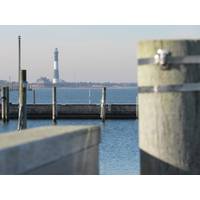
The Benefits of Sustainable Marine Lumber
Today’s marinas are held to a higher standard of environmental stewardship than in the past. No longer are they just responsible for the environmental impacts of their day-to-day operations, but also of their infrastructure and how it affects both the oceans, waterways and their delicate marine ecosystems. For these reasons, many marinas are being far more selective as to construction materials being specified for their expansion and/or restoration projects.One material that is rising to the top for its eco-friendly and performance attributes is sustainable marine lumber. Understanding why this

Research Vessel Atair to be Commissioned this Spring
.The vessel’s underwater noise has been optimized to meet the DNV SILENT Class Notation (SILENT R), and the new BSH ship complies with the stringent International Maritime Organization (IMO) Tier III standards for the emissions of nitrogen oxides (NOx) as well as the regulations of the US Environmental Protection Agency (EPA) Tier IV for soot particle emissions. It meets the requirements for the “Blue Angel” awarded by the German Federal Ministry of the Environment for eco-friendly ship design.The vessel will be capable of maximum speed of approximately 13 knots and can accommodate a total
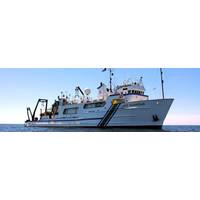
EPA Launches Research Vessel to Monitor Lake Ontario
The U.S. Environmental Protection Agency (EPA) has kicked off an extensive binational initiative to gather critical information about the chemical and biological conditions of Lake Ontario in an effort to better protect and restore the lake and its watershed.The Cooperative Science Monitoring Initiative involves U.S. and Canadian federal agencies that are partnering with New York State and the Province of Ontario, as well as academic, environmental and ecological organizations working under the Great Lakes Water Quality Agreement aimed at improving the waters of the Great Lakes and issuing a Lakewide
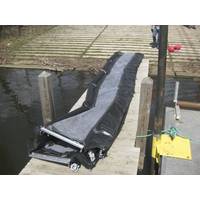
Coast Guard Tests Underwater Oil Barrier System
the barrier in the Kalamazoo River near the upstream region of Morrow Lake, and tested two different anchoring methods. The anchoring method is dependent on river depth, type of substrate of the river bottom, and resources available to oil spill responders at the time of an incident. Local U.S. Environmental Protection Agency representatives and the Northern Michigan regional director from the office of Sen. Gary Peters, D-Mich., observed portions of the test.This is one of several efforts the RDC is undertaking to improve spill response capabilities for non-floating oil because of the increasing
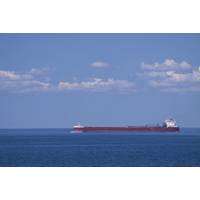
Study: Nonnative Species Carried in Lakers' Ballast Water
(LSRI), builds on work conducted by others in the Great Lakes in recent years.The ships’ operators proposed the study as a means of complying with Minnesota Pollution Control Agency ballast water permitting requirements, and approached GWRC to undertake the scientific research. The U.S. Environmental Protection Agency (EPA) paid for the study via the U.S. Maritime Administration (MARAD) portion of the Great Lakes Restoration Initiative.Ten U.S. and Canadian-flag lakers participated in the study. Sampling took place in 2017, primarily in the late summer through early winter, and focused on
EPA Grant Supports Clean Underwater Coating Development
Oceanit Laboratories, Inc. has been awarded $100,000 from the U.S. Environmental Protection Agency (EPA) to develop a nontoxic coating for use in water pipeline repair. The Honolulu based company is one of 15 small businesses nationwide receiving a total of $1.6 million to develop technologies that will help protect human health and the environment. “EPA’s Small Business Innovation Research program is awarding funding to these small businesses because they have demonstrated the potential to create technologies that will improve our environment and our economy



 February 2024
February 2024





